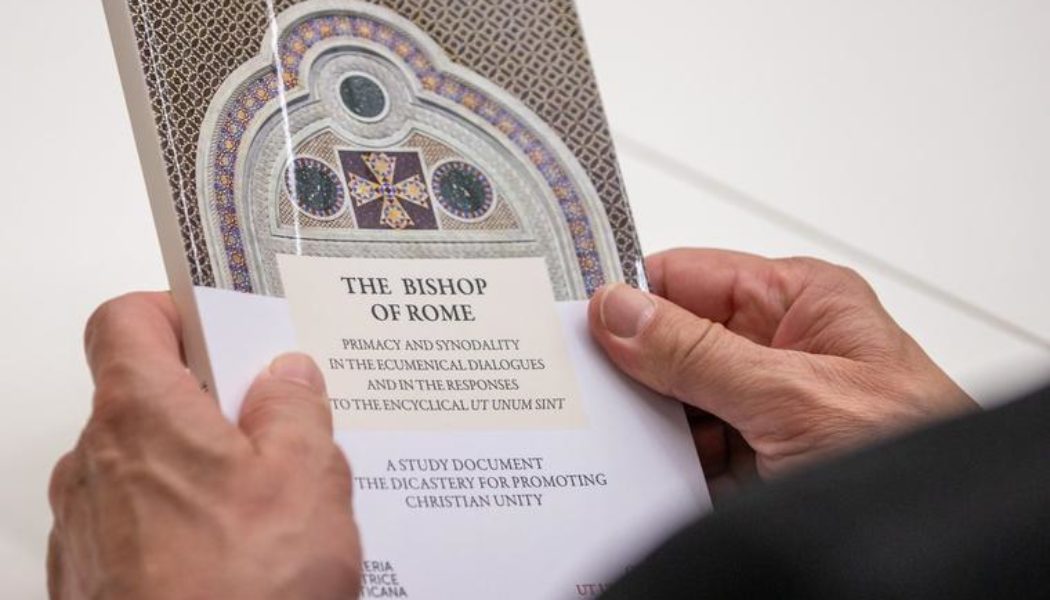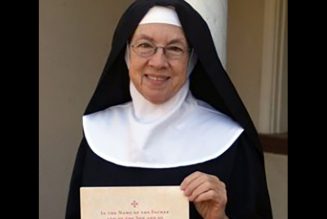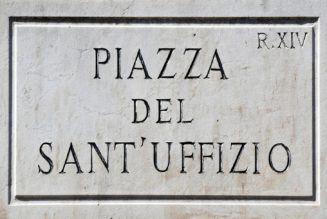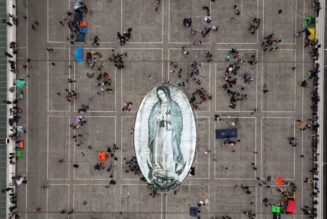
“The Bishop of Rome,” a study document of the Dicastery for the Promotion of Christian Unity (DPCU) on papal primacy and ecumenism combines detailed reporting on recent theological developments with proposals that ignore the major ecclesial developments of the last few years.
In his 1995 encyclical, Ut Unum Sint (That They May Be One), Pope St. John Paul II invited other Christian churches and ecclesial communities to re-think how the Petrine ministry may be exercised in service of greater Christian unity. It was a bold invitation, but did not generate a significant response from other Christian leaders.
In 2020, for the 25th anniversary of the encyclical, the Dicastery for Promoting Christian Unity began a multi-year consultation process that produced the current 43,000-word document. Failing to get actual responses from other Christian pastors, the dicastery decided to commission its own responses from the theological guild.
The dicastery describes it as “the fruit of almost three years of truly ecumenical and synodal work”:
“It summarizes some 30 responses to Ut Unum Sint and 50 ecumenical dialogue documents on the subject. It involved not only the Officials, but also the 46 Members and Consultors of the Dicastery who discussed it at two Plenary Meetings. The best Catholic experts on the subject were consulted, as well as numerous Orthodox and Protestant experts, in collaboration with the Institute for Ecumenical Studies of the Angelicum.”
A survey of the most recent study and scholarship is certainly useful for those working in the field. Seeking to understand why John Paul’s invitation has largely gone unheeded is necessary. But the proposals — and they are only proposals — from the Dicastery for Promoting Christian Unity have a certain “ivory tower” feel, quite distant from the actual reality of Christian unity today.
Synodality is Not a Solution
The full title of the document suggests assumptions of how things might be rather than how they actually are: “The Bishop of Rome: Primacy and Synodality in Ecumenical Dialogues and in the Responses to the Encyclical Ut Unum Sint.”
Synodality is fashionable in Rome now, but was never mentioned in Ut Unum Sint. Moreover, synodality today produces not unity but division. Synodal structures have been around for a long time, and so it is not the case that synodality always produces division, but it is the case now.
For the Dicastery for Promoting Christian Unity to propose that greater synodality will lead to Christian unity ignores major developments in the Christian world, unfolding even as the dicastery was assembling its research materials:
- The Orthodox Churches — which are governed by synods — are no longer in communion with each other. Moscow, the largest Orthodox Church, has excommunicated Constantinople and Kyiv.
- Similarly ignored is that the fact that in 2023, many Anglican primates — which constitute 80% of the global Anglican Communion — declared that they no longer recognized the Archbishop of Canterbury as an “instrument of communion.” The Vatican has chosen to pretend that this simply didn’t happen, earlier this year hosting Archbishop Justin Welby and the primates’ meeting as if nothing has changed. But the Anglican Communion — also governed by synods — no longer exists.
- The Coptic Orthodox Church — another synodal Church — broke off ecumenical relations with Rome just months ago over the Vatican’s supposed approval for blessing same-sex couples.
- The “Synodal Way” process in Germany has produced grave divisions between the Holy Father and the bishops of Germany. Synodality is currently eroding Catholic unity ad intra. Why then would the DPCU propose to expand it ad extra?
- In a few weeks, the second largest of the Catholic eastern rites, the Syro-Malabar Church, may well face the excommunications of many priests over a long-running liturgical dispute. If there are mass excommunications, a schism is possible. The Syro-Malabar Church is governed by a synod.
Synodality is likely going through the greatest crisis in its history. The urgent task for Christian pastors is to contain the damage, not expand its impact.
The study document speaks of synodality and primacy in abstract terms. The 21st-century reality is division, not unity. It is theoretically possible that a more synodal exercise of papal primacy may lead to ecumenical progress, but that is simply not the case today, nor for the foreseeable future. Thus the Dicastery for Promoting Christian Unity’s document remains an interesting intellectual exercise, but has no pastoral application today.
It should also be remembered that the synodal assembly of October 2023 found that there was no agreement on what synodality means. Indeed, a Vatican working group was struck earlier this year to attempt to find a meaning for synodality. If the Vatican does not understand what synodality means, it cannot be helpful in rethinking papal primacy.
Vatican I and Vatican II
While the First Vatican Council (1869-1870) is best known for its definition of papal infallibility, its teaching on “universal jurisdiction” was more important in the daily life of the Church.
Vatican I clarified that the pope has authority over the entire Church — full, immediate and ordinary power. It is, to be sure, a maximalist interpretation of the Petrine office. The Dicastery for Promoting Christian Unity considers that this might pose a problem and proposes instead:
“a Catholic ‘re-reception’, ‘re-interpretation’, ‘official interpretation’, ‘updated commentary’ or even ‘rewording’ of the teachings of Vatican I. Indeed, some dialogues observe that these teachings were deeply conditioned by their historical context, and suggest that the Catholic Church should look for new expressions and vocabulary faithful to the original intention but integrated into a communio ecclesiology and adapted to the current cultural and ecumenical context.”
To “re-word” the teaching of an ecumenical council is a major task, something another ecumenical council may wish to take up. Fortunately for the Dicastery for Promoting Christian Unity, Vatican II did exactly that, complementing the teaching of Vatican I on the papal office with the collegiality of bishops, who together live the communio of the Church. In 1995, John Paul precisely thought that the communio ecclesiology of Vatican II offered the path forward. That would seem a more fruitful path than re-formulating the teaching of Vatican I.
Backwardism?
Another instance of the study document ignoring present realities is that Pope Francis has made two key steps backward in regard to the communio approach of Vatican II.
First, his summary removal of bishops. To be sure, the discipline and removal of bishops is often quite popular; many voices think that the Holy Father should do more of it. Yet the removal of a bishop, especially if the process is murky or arbitrary, is animated more by the spirit of Vatican I than Vatican II. The Christians now separated from Rome would likely not be keen on a papal primacy that can fire bishops like local subordinates.
Second, in his reform of the Roman Curia, Pope Francis decided that governance can be exercised by laypeople, meaning that authority did not come from the office of bishop, but rather by delegation of the Holy Father himself. That is a highly contested view, and not officially settled among Catholic canon law experts.
Nevertheless, the idea that authority comes from papal mandate rather than a share in the apostolic succession is a step back from Vatican II toward Vatican I. It is unlikely that such a backwardist approach would be appealing to other Christians in the exercise of the papal office.
The “study document” is a useful academic contribution. But is the kind of theological work that Pope Francis often disparages as “desk theology,” distant from the actual life of the Christian people.









